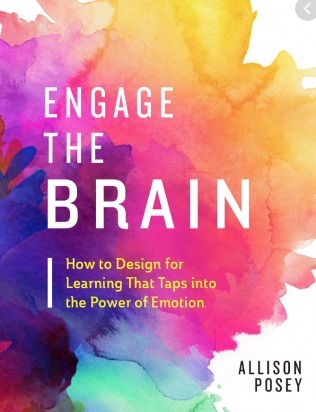
Engage the Brain: design to support emotions for learning
This book discusses some of the brain science of emotions and how emotions are critical for learning. There are strategies, including Universal Design for Learning and the Mood Meter, that support emotional design for learning.
Research on the brain has shown that emotion plays a key role in learning, but how can educators apply that research in their day-to-day interactions with students? What are some teaching strategies that take advantage of what we know about the brain?
Engage the Brain answers these questions with easy-to-understand explanations of the brain's emotion networks and how they affect learning, paired with specific suggestions for classroom strategies that can make a real difference in how and what students learn.
You can read some of this book for free from the publisher, ASCD.
Organization/Publishers:
Share this resource:
Posted date:
March 10, 2020


